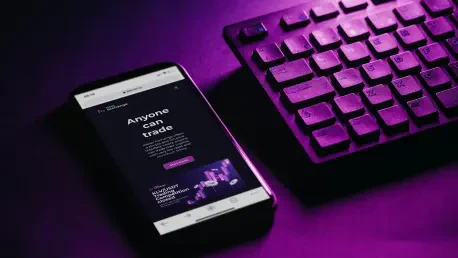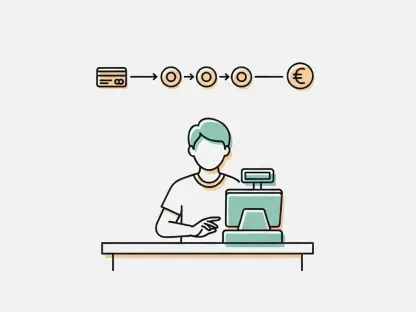Why does Web3 feel like a fortress with no clear entrance? For millions eager to explore cryptocurrency and blockchain, the journey often stalls at the gates of confusing jargon, cumbersome seed phrases, and interfaces that seem designed to exclude rather than invite. Yet, amidst this chaos, one designer stands out as a beacon of change. Zoe Gao, a visionary in the decentralized tech space, is on a mission to dismantle these barriers, crafting user experiences that could finally unlock crypto for the masses. Her work isn’t just about aesthetics—it’s about building bridges to a future where decentralized systems are as intuitive as any everyday app.
Why Web3 Feels Like a Puzzle—and How One Designer Aims to Solve It
Navigating Web3 often feels like deciphering an ancient code. Terms like “gas fees” and “private keys” baffle newcomers, while the risk of losing access to funds through a forgotten seed phrase looms large. Studies reveal that nearly 60% of potential crypto users abandon their efforts due to these complexities, highlighting a critical gap between innovation and accessibility. This frustration isn’t just a minor inconvenience; it’s a wall preventing widespread adoption of a technology that promises financial freedom and transparency.
Enter Zoe Gao, a designer whose approach challenges the status quo of Web3’s user experience. With a belief that technology should serve people, not perplex them, Gao reimagines how decentralized platforms can look and feel. Her vision is simple yet profound: strip away the unnecessary hurdles and create pathways that welcome everyone, from curious beginners to seasoned investors. Through her work, the daunting maze of Web3 begins to resemble a clear, navigable roadmap.
Her influence extends beyond individual projects, sparking a broader conversation about what accessibility means in the digital age. By focusing on human-centered design, Gao isn’t just tweaking interfaces—she’s redefining how an entire industry connects with its audience. This shift could be the key to transforming cryptocurrency from a niche interest into a mainstream tool, proving that one designer’s perspective can indeed alter the trajectory of a global movement.
The Critical Need for User-Friendly Crypto in a Digital Era
As cryptocurrency gains traction worldwide, with over 400 million users globally as of recent estimates, the stakes for simplifying Web3 have never been higher. Blockchain technology offers unparalleled opportunities for financial inclusion and data sovereignty, yet its steep learning curve alienates countless potential participants. Without intuitive design, the promise of decentralization risks remaining an elite privilege rather than a universal benefit.
This urgency aligns with significant policy developments that underscore the importance of accessible digital assets. Frameworks like President Biden’s Executive Order 14067, which emphasizes responsible innovation, and the Financial Innovation and Technology for the 21st Century Act (FIT21), prioritize consumer protection and retail access to crypto. These initiatives signal a clear mandate: the industry must evolve to meet users where they are, a challenge that innovators like Gao are uniquely positioned to address.
Gao’s contributions resonate with these broader goals by tackling the root cause of hesitation—design inaccessibility. Her efforts to make Web3 platforms approachable directly support the push for safer, more inclusive digital ecosystems. As adoption continues to grow, her role in bridging technical complexity with everyday usability becomes not just relevant but essential, paving the way for a future where crypto isn’t a barrier but a gateway.
Zoe Gao’s Revolutionary Approach to Web3 Design
Zoe Gao’s impact on Web3 design is evident through a series of groundbreaking projects that prioritize user needs over technical bravado. Take Tomo, a multi-chain wallet launched with a social twist, where Gao replaced intimidating seed phrases with familiar logins like Telegram or Apple accounts. This single change onboarded 17,000 users and facilitated $1.6 million in trading volume, demonstrating how small shifts in design can yield massive engagement.
Her talent for building trust through visuals shines in her work with Moso, a Web3 shopping platform. By crafting a unified brand identity and introducing features like Moso Shops, which enable crypto rewards with over 2,000 merchants, Gao strengthened partnerships with industry giants such as Coinbase and Walmart. This strategic design not only resolved internal branding conflicts but also scaled the platform’s reach, showing how aesthetics and functionality can work hand in hand to inspire confidence.
Beyond accessibility and trust, Gao pushes boundaries with functional innovation. Her design for Satori’s dual-interface wallet offers a beginner-friendly mode alongside a power mode for experts, catering to diverse skill levels. Similarly, her transparency tools for Sahara AI, including live proof-of-reserves dashboards, set a new standard for accountability in decentralized finance. Each project under her influence reflects a commitment to making Web3 not just usable but indispensable, backed by tangible metrics of user growth and industry impact.
What Experts and Users Reveal About Gao’s Influence
The ripple effects of Gao’s designs are felt across the Web3 community, earning praise from both industry leaders and everyday users. Prominent figures in the blockchain space have lauded her work as a benchmark for scalability, with one tech executive noting that her interfaces “turn skepticism into curiosity,” a vital step for mass adoption. This sentiment underscores how her designs are shaping not just products but perceptions of an entire sector.
User feedback further amplifies her impact, with many describing platforms like Tomo and Moso as refreshingly intuitive. A first-time crypto user shared how Tomo’s social login feature eliminated the fear of losing access to funds, making their entry into Web3 seamless. Such testimonials highlight Gao’s knack for addressing real pain points, transforming daunting technology into tools that feel like second nature to anyone who uses them.
A standout moment that captures her ability to shift narratives occurred at Art Basel Miami, where Gao executed a 48-hour branding sprint for Tomo. This rapid overhaul elevated the platform’s image from scrappy to credible, drawing attention from cultural icons like DJ Peggy Gou. This anecdote, paired with expert endorsements, paints a vivid picture of a designer whose influence extends beyond code and pixels, positioning her as a transformative force in redefining how Web3 connects with the world.
Practical Steps Inspired by Gao to Make Crypto Inclusive
Drawing from Gao’s pioneering methods, actionable strategies emerge for developers and businesses aiming to enhance Web3 adoption. A fundamental step is to simplify entry points by replacing complex processes with familiar mechanisms, such as social logins over seed phrases. This approach, evident in Tomo’s success, reduces friction for newcomers and encourages sustained engagement with decentralized platforms.
Another key principle is to prioritize visual clarity as a trust-building tool. Consistent branding, paired with transparent features like real-time dashboards, can demystify crypto operations for users. Gao’s redesign of Moso exemplifies this, where a cohesive identity reassured partners and customers alike, proving that design can be a powerful ally in fostering reliability within an often opaque industry.
Lastly, flexibility in design ensures that platforms cater to a spectrum of expertise. Interfaces that adapt, as seen in Satori’s dual modes, allow beginners to start with ease while offering advanced users the depth they seek. By applying these human-centered tactics, stakeholders in the Web3 space can emulate Gao’s success, crafting experiences that invite rather than intimidate, ultimately broadening the reach of decentralized technology to a global audience.
Reflecting on a Design Legacy That Shaped Web3
Looking back, Zoe Gao’s journey stands as a testament to the power of design in breaking down barriers. Her relentless focus on usability turned cryptic systems into welcoming spaces, empowering thousands to engage with cryptocurrency without fear. Each project she touched, from Tomo’s accessible wallet to Moso’s scalable marketplace, left an indelible mark on how the industry approaches user experience.
Her alignment with broader policy goals also cemented her role as a catalyst for responsible innovation. By crafting interfaces that prioritized safety and clarity, Gao contributed to a vision of crypto that serves everyone, not just a select few. Her influence challenged developers and companies to rethink their priorities, placing the user at the heart of every decision.
Moving forward, the lessons from her work urge continued emphasis on simplicity and trust in Web3 development. The industry must commit to evolving interfaces that anticipate user needs, ensuring that the next wave of adopters finds a landscape far less daunting. Gao’s legacy offers a clear directive: design isn’t just a layer—it’s the foundation for a decentralized future that truly belongs to all.









